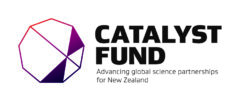
Professor Hong J. DI
Professor Hong J. DI, ONZM, FNZSSS, FNZIAHS, FRSNZ
Director of the New Zealand – China Water Research Centre (+)
Professor of Soil and Environmental Science Address: Department of Soil and Physical Sciences Faculty of Agriculture and Life Sciences PO Box 85084 Lincoln University Lincoln 7647, Christchurch New Zealand Telephone: +64 3 4230779 Email: hong.di@lincoln.ac.nz Website: http://www.lincoln.ac.nz/ Awards, honours, and memberships • Honoured by Her Majesty Queen Elizabeth the II, as Officer of the New Zealand Order of Merit (ONZM), for services to agricultural research. Announced in The Queen’s Birthday Honours, 2 June 2008. • Elected as a Fellow of the Royal Society of New Zealand (FRSNZ). 2016. • Elected as Fellow of the New Zealand Institute of Agricultural and Horticultural Sciences (FNZIAHS). 2008. • Agricom Significant Achievement Award for outstanding contributions to the advancement of agriculture and horticulture. New Zealand Institute of Agricultural and Horticultural Science Inc. 2005. • Awarded the New Zealand Society of Soil Science Leamy Award for Most Meritorious New Zealand Contribution to Soil Science published in the past 3 years (2000). Research interests • Nitrate leaching, nitrous oxide emissions. • Mitigation of nitrous oxide emissions and nitrate leaching using nitrification inhibitors. • Soil molecular microbial ecology. Publications 1. Di, H.J. and Cameron, K.C. (2016). Inhibition of nitrification to mitigate nitrate leaching and nitrous oxide emissions in grazed grassland: A review. Journal of Soils and Sediments 16: 1401–1420. DOI 10.1007/s11368-016-1403-8. 2. Di, H.J., Cameron, K.C., Podolyan, A., Edwards, G., de Klein, C., Dynes, R. and Woods, R. (2016). The potential of using alternative pastures, forage crops and gibberellic acid to mitigate nitrous oxide emissions. Journal of Soils and Sediments. 16:2252–2262. DOI 10.1007/s11368-016-1442-1. 3. Di, H.J., Cameron, K.C., Podolyan, A., and Robinson, A. (2014). Effect of soil moisture status and a nitrification inhibitor, dicyandiamide, on ammonia oxidizer and denitrifier growth and nitrous oxide emissions in a grassland soil. Soil Biology and Biochemistry. http://dx.doi.org/10.1016/j.soilbio.2014.02.01. 73: 59-68. 4. Di, H.J. and Cameron, K.C. (2012). How does the application of different nitrification inhibitors affect nitrous oxide emissions and nitrate leaching from cow urine in grazed pastures? Soil Use and Management 28: 54–61. 5. Di, H.J. and Cameron, K.C. (2011). Inhibition of ammonium oxidation by a liquid formulation of 3,4-Dimethylpyrazole phosphate (DMPP) compared with a dicyandiamide (DCD) solution in six New Zealand grazed grassland soils. Journal of Soils and Sediments 11: 1032–1039. 6. Di, H.J., Cameron, K.C., Shen, J.P., Winefield, C.S., O’Callaghan, M., Bowatte, S. and He, J.Z. (2011). Methanotroph abundance not affected by applications of animal urine and a nitrification inhibitor, dicyandiamide, in six grazed grassland soils. Journal of Soils and Sediments. 11: 432-439. DOI 10.1007/s11368-010-0318-z. 7. Di, H.J., Cameron, K.C., Shen, J.P., Winefield, C.S., O’Callaghan, M., Bowatte, S. and He, J.Z. (2010). Ammonia oxidizing bacteria and archaea grow under contrasting soil nitrogen conditions. FEMS Microbiology Ecology 72: 386-394. 8. Di, H.J., Cameron, K.C., Sherlock, R.R., Shen, J.P., He, J.Z., Winefield, C.S. (2010). Nitrous oxide emissions from grazed grassland as affected by a nitrification inhibitor, dicyandiamide, and relationships with ammonia oxidizing bacteria and archaea. Journal of Soils and Sediments DOI 10.1007/s11368-009-0174-x. 10: 943-954. 9. Di, H.J., Cameron, K.C., Shen, J.P., Winefield, C.S., O’Callaghan, M., Bowatte, S. and He, J.Z. (2009). Nitrification driven by bacteria and not archaea in nitrogen rich grassland soils. Nature Geoscience 2: 621-624. 10. Di, H.J., Cameron, K.C., Shen, J.P., He, J.Z., Winefield, C.S. (2009). A lysimeter study of nitrate leaching from grazed grassland as affected by a nitrification inhibitor, dicyandiamide, and relationships with ammonia oxidizing bacteria and archaea. Soil Use and Management 25: 454-461. 11. Di, H.J. and Cameron, K.C. (2008). Sources of nitrous oxide from 15N-labelled animal urine and urea fertilizer with and without a nitrification inhibitor, dicyandiamide (DCD). Australian Journal of Soil Research 46: 76-82. 12. Di, H.J. and Cameron, K.C. (2007). Nitrate leaching losses and pasture yields as affected by different rates of animal urine nitrogen returns and application of a nitrification inhibitor – a lysimeter study. Nutrient Cycling in Agroecosystems 79: 281-290. 13. Di, H.J., Cameron, K.C. and R.R. Sherlock (2007). Comparison of the effectiveness of a nitrification inhibitor, dicyandiamide (DCD), in reducing nitrous oxide emissions in four different soils under different climatic and management conditions. Soil Use and Management 23: 1-9. 14. Di, H.J. and Cameron, K.C. (2006). Nitrous oxide emissions from two dairy pasture soils as affected by different rates of a fine particle suspension nitrification inhibitor, dicyandiamide (DCD). Biology and Fertility of Soils 42: 472-480. 15. Di, H.J. and Cameron, K.C. (2005). Reducing environmental impacts of agriculture by using a fine particle suspension nitrification inhibitor to decrease nitrate leaching from grazed pastures. Agriculture, Ecosystems and Environment 109: 202-212.

Dr Jiafa Luo
Dr Jiafa Luo
Member of Leadership Group (+)
Affiliations: AgResearch Email: Jiafa.Luo@agresearch.co.nz Website: http://www.agresearch.co.nz/ Honours, awards, and memberships: • 2015, Winner, Gallagher Agricultural Science Award, the Kudos, Hamilton Science Awards Trust • 2015, Consultation expert, Meeting organized by FAO on sustainable grassland and pasture management, Lanzhou University, China. (fully paid invitation) • 2015, Invited speaker, Institute of Genetics and Developmental Biology and Institute of Applied Ecology, Chinese Academy of Sciences, Agricultural nutrient management and practices to reduce nutrient losses, Hebei Academy of Agricultural Sciences, Shandong Academy of Agricultural Sciences, Fujian Academy of Agricultural Sciences and Liaoning Academy of Agricultural Sciences, China. (fully paid invitation) • 2014, Invited by the New Zealand - China Centre of Dairy Excellence to give a keynote speech on dairy farm effluent and nutrient management in a dairy industry conference (fully paid invitation) • International journal editorships: Agriculture, Ecosystems and Environment; Communications in Soil Science and Plant Analysis; The Open Agriculture Journal • Member of the New Zealand Society of Soil Science Research interests Nitrogen cycling in farming systems; Sustainable dairy farm systems; Anima effluent and manure treatment technologies; Soil science, Nitrous oxide emissions and mitigation Publications: 1. Hoogendoorn CJ, Luo J, Lloyd-West CM, Devantier BP, Lindsey SB, Sun, S, Pacheco D, Li Y, Theobald PW, Judge A (2016) Nitrous oxide emission factors for urine from sheep and cattle fed forage rape (Brassica napus L.) or perennial ryegrass/white clover pasture (Lolium perenne L./Trifolium repens) Agriculture, Ecosystems and Environment 227:11-23. 2. Luo J, Ledgard SF, Wise B, Welten B, Lindsey S, Judge A, Sprosen M 2016. Effect of dicyandiamide (DCD) on nitrous oxide emissions from cow urine deposited on a pasture soil, as influenced by DCD application method and rate. Animal Production Science 56: 350-354. 3. Li J, Luo J, Shi Y, Li Y, Ma Y, Ledgard SF, Wang L, Houlbrooke D, B L, Lindsey S 2016. Dung and farm dairy effluent affect urine patch nitrous oxide emissions from a pasture. Animal Production Science 56: 337-342. 4. van der Weerden TJ , Luo J, Di HJ, Podolyan A, Phillips RL, Saggar S, de Klein CAM, Cox N, Ettema P, Rys G 2016. Nitrous oxide emissions from urea fertiliser and effluent with and without inhibitors applied to pasture. Agriculture, Ecosystems and Environment 219: 58–70. 5. van der Weerden TJ , Cox N, Luo J, Di HJ, Podolyan A, Phillips RL, Saggar S, de Klein CAM, Ettema P, Rys G 2016. Refining the New Zealand nitrous oxide emission factor for urea fertiliser and farm dairy effluent. Agriculture, Ecosystems and Environment 222: 133–137. 6. Luo J, Ledgard SF, Wise B, Welten B, Lindsey S, Judge A, Sprosen M 2015. Effect of dicyandiamide (DCD) delivery method, application rate and season on pasture urine patch nitrous oxide emissions. Biology and Fertility of Soils 51: 453-464. 7. Luo J, Sun XZ, Pacheco D, Ledgard SF, Lindsey SB, Hoogendoorn CJ, Wise B, Watkins NL 2015. Nitrous oxide emission factors for urine and dung from sheep fed either fresh forage rape (Brassica napus L.) or fresh perennial ryegrass (Lolium perenne L.). Animal - An International Journal of Animal Bioscience 9: 534-543. 8. Li J, Luo J, Shi Y, Lindsey S, Houlbrooke D, Ledgard S 2015. Nitrous oxide emissions from dairy farm effluent applied to a New Zealand pasture soil. Soil Use and Management 31: 279-289. 9. De Klein C, Luo J, Woodward B, Styles T, Wise B, Lindsey S Cox N 2014. The effect of nitrogen concentration in synthetic cattle urine on nitrous oxide emissions. Agriculture, Ecosystems and Environment 188: 85-92. 10. Ledgard SF, Luo J, Sprosen MS, Wyatt J, Balvert S, Lindsey S 2014. Effects of the nitrification inhibitor dicyandiamide (DCD) on pasture production, nitrous oxide emissions and nitrate leaching in Waikato, New Zealand. New Zealand Journal of Agricultural Research 57: 294-315. 11. van der Weerden TJ, Luo J, Dexter M 2014. Addition of straw or sawdust to mitigate greenhouse gas emissions from slurry produced by housed cattle: a field incubation study. Journal of Environmental Quality 43:1345–1355. 12. De Klein C, Luo J, Woodward B, Styles T, Wise B, Lindsey S Cox N 2014. The effect of nitrogen concentration in synthetic cattle urine on nitrous oxide emissions. Agriculture, Ecosystems and Environment 188: 85-92. 13. Li J, Shi Y, Luo J, Zaman M, Houlbrooke D, Ding W, Ledgard S, Ghani A 2014. Use of nitrogen process inhibitors for reducing gaseous nitrogen losses from land-applied farm effluents. Biology and Fertility of Soils 50: 133-145. 14. Luo J, Hoogendoorn C, van der Weerden T, Saggar S, de Klein C, Giltrap D, Rollo M, Rys G 2013. Nitrous oxide emissions from grazed hill land. Agriculture, Ecosystems and Environment 181: 58-68. 15. Luo J, Ledgard SF, Lindsey SB 2013. Nitrous oxide and greenhouse gas emissions from a grazed pasture as affected by use of a nitrification inhibitor and a restricted grazing regime. Science of the Total Environment 465: 107-114.

Emeritus Professor Keith Cameron
Emeritus Professor Keith Cameron
Member of Leadership Group (+)
Emeritus Professor of Soil and Environmental Science Department of Soil and Physical Sciences Faculty of Agriculture and Life Sciences Lincoln University Canterbury New Zealand Email: Keith.cameron@lincoln.ac.nz Website: http://www.lincoln.ac.nz/ http://www.lincoln.ac.nz/Research/Research-Centres/Centre-for-Soil-and-Environmental-Research/ Honours, awards, and memberships • Officer of the New Zealand Order of Merit (ONZM) • Fellow of the Royal Society of New Zealand (FRSNZ) • Fellow of the NZ Society of Soil Science (FNZSSS) • Fellow of the NZ Institute of Agricultural Science (FNZIAS) • Awarded ‘A’ Grade Scholar (World Class Researcher) by PBRF assessment panel • Member, NZAGRC Global Alliance Senior Scientist Award (GRASS) Advisory Panel. Research Interest Nitrification Inhibitors, soil nitrogen, nitrate leaching from soils, nitrous oxide emissions from grazed pasture systems, soil fertility, and soil physics. Publications: 1. Di, H.J. & Cameron, K.C. (2016). Inhibition of nitrification to mitigate nitrate leaching and nitrous oxide emissions in grazed grassland: a review. Journal of Soils and Sediments 16: 1401-1420. 2. Selbie, D.R., Lanigan, G.J., Laughlin, R.J., Di, H.J., Moir, J.L., Cameron, K.C., Clough, T.J., Watson, C.J., Grant, J., Somers, C., Richards, K.G. (2015). Confirmation of co-dentrification in grazed grassland. Nature Scientific Reports 5:17361. doi: 10. 1038/srep17361. 3. Malcolm, B.J., Cameron, K.C., Edwards, G.R, Di, H.J. (2015). Nitrogen leaching losses from lysimeters containing winter kale: the effects of urinary N rate and DCD application. New Zealand Journal of Agricultural Research 58(1), 13-25. 4. Cameron, K.C., Di, H.J., Moir, J.L. (2014). Dicyandiamide (DCD) effect on nitrous oxide emissions, nitrate leaching and pasture yield in Canterbury, New Zealand. New Zealand Journal of Agricultural Research 57:251–270. 5. Robinson, A., Di, H.J., Cameron, K.C., Podolyan, A., He, J.Z. (2014).The effect of soil pH and dicyandiamide (DCD) on N2O emissions and ammonia oxidiser abundance in a stimulated grazed pasture soil. Journal of Soils and Sediments 14: 1434 – 1444. 6. Robinson, A., Di, H.J., Cameron, K.C., Podolyan, A. (2014). Effect of soil aggregate size and dicyandiamide on N2O emissions and ammonia oxidizer abundance in a grazed pasture soil. Soil Use and Management 30: 231-240. 7. Selbie, D.R., Cameron, K.C., Di, H.J., Moir, J.L., Lanigan, G.J., Richards, K.G. (2014). The effect of urinary nitrogen loading rate and a nitrification inhibitor on nitrous oxide emissions from a temperate grassland soil. Journal of Agricultural Science DOI: 10.1017/S0021859614000136. 8. Guo, Yan, J., Di, Hong, J., Cameron, Keith, C., Li, Bowen (2014). Effect of application rate of a nitrification inhibitor, dicyandiamide (DCD), on nitrification rate and ammonia-oxidising bacteria and archaea growth in a grazed pasture soil: an incubation study. Journal of Soils and Sediments 14: 897-903. 9. Di, H.J., Cameron, K.C., Podolyan, A., Robinson, A. (2014). Effect of soil moisture status and a nitrification inhibitor dicyandiamide on ammonia oxidiser growth and Nitrous oxide emissions in a grassland pasture. Soil Biology and Biochemistry 73: 59-68. 10. Cameron, K.C., Di, H.J., Moir, J.L. (2013). Nitrogen losses from the soil/plant system: a review. Annals of Applied Biology 162: 145–173. 11. Di, H.J., Cameron, K.C. (2011). Inhibition of ammonium oxidation by a liquid formulation of 3,4-Dimethylpyrazole phosphate (DMPP) compared with a dicyandiamide (DCD) solution in six New Zealand grazed grassland soils. Journal of Soils and Sediments 11: 1032–1039. 12. Di, H.J., Cameron, K.C., Shen, J.P., Winefield, C.S., O’Callaghan, M., Bowatte, S., He, J.Z. (2009). Nitrification driven by bacteria and not archaea in nitrogen rich grassland soils. Nature Geoscience 2: 621–624.

Dr Roland Stenger
Dr Roland Stenger
Member of Leadership Group (+)
Affiliations: Lincoln Agritech Limited Email: Roland.Stenger@lincolnagritech.co.nz Website: www.lincolnagritech.co.nz Honours, awards, and memberships: Member NZSSS and New Zealand Hydrological Society Research interests: Quantification of pathway-specific transfers of nitrogen and phosphorus from land to surface waters that account for lag times and attenuation potentials. Biogeochemical and hydrological controls on denitrification in the vadose zone–groundwater zone continuum. Redox-stratification of groundwater systems. Water and nutrient discharge dynamics in artificially drained land. Denitrifying bioreactor technology. Harnessing built and natural N attenuation capacity to optimise land-use patterns. Publications 1. Rivas, A., Barkle, G., Sarris, T., Park, J., Kenny, A., Maxwell, B., Stenger, R., Moorhead, B., Schipper, L., Clague, J. 2023. Improving accuracy of quantifying nitrate removal performance and enhancing understanding of processes in woodchip bioreactors using high-resolution data. Science of the Total Environment 880: 163289. https://doi.org/10.1016/j.scitotenv.2023.163289. 2. Barkle, G., Stenger, R., Moorhead, B., Clague, J. (2021) The importance of the hydrological pathways in exporting nitrogen from grazed artificially drained land. Journal of Hydrology, 597 (https://doi.org/10.1016/j.jhydrol.2021.126218). 3. Woodward, S. J. R. and Stenger, R. (2020) Extension of Bayesian chemistry-assisted hydrograph separation to reveal water quality trends (BACH2). Stochastic Environmental Research and Risk Assessment (https://doi.org/10.1007/s00477-020-01860-7) 4. Rivas, A., Barkle, G., Stenger, R., Moorhead, B. Clague, J., (2020) Nitrate removal and secondary effects of a woodchip bioreactor for the treatment of subsurface drainage with dynamic flows under pastoral agriculture. Ecological Engineering 148: 105786 (https://doi.org/10.1016/j.ecoleng.2020.105786) 5. McDowell, R.W., Depree, C., Stenger, R. (2020) Likely controls on dissolved reactive phosphorus concentrations in baseflow of an agricultural stream. Journal of Soils and Sediments (https://doi.org/10.1007/s11368-020-02644-w) 6. Srinivasan, M. S., Muirhead, R. W., Singh, S, K., Monaghan, R. M., Stenger, R., Close, M. E., Manderson, A., Drewry, J. J., Smith, L. C., Selbie, D., Hodson, R. (2020) Development of a national-scale framework to characterise transfers of N, P and Escherichia coli from land to water. New Zealand Journal of Agricultural Research. (https://doi.org/10.1080/00288233.2020.1713822) 7. Wilson, S. R., Close, M. E., Abraham, P., Sarris, T. S. Banasiak, L., Stenger, R., Hadfield, J. (2020) Achieving unbiased predictions of national-scale groundwater redox conditions via data oversampling and statistical learning. Science of the Total Environment 705:135877 14pp. (https://doi.org.10.1016/j.scitotenv.2019.135877) 8. Clague, J.C., Stenger, R., Morgenstern, U. (2019) The influence of unsaturated zone drainage status on denitrification and the redox succession in shallow groundwater. Science of the Total Environment 660:1232-44. 9. Singh, S.K. and Stenger, R. (2018) Indirect methods to elucidate water flows and contaminant transfer pathways through meso-scale catchments – A review. Environmental Processes (https://doi.org/10.1007/s40710-018-0331-6). 10. Woodward, S. J. R. and Stenger, R. (2018) Bayesian chemistry-assisted hydrograph separation (BACH) and nutrient load partitioning from monthly stream phosphorus and nitrogen concentrations. Stochastic Environmental Research and Risk Assessment (https://doi.org/10.1007/s00477-018-1612-3). 11. McDowell, R.W., Simpson, Z.P., Stenger, R., Depree, C. (2018) The influence of a flood event on the potential sediment control of baseflow phosphorus concentrations in an intensive agricultural catchment. Journal of Soils and Sediments (https://doi.org/10.1007/s11368-018-2063-7). 12. Stenger, R., Clague, J.C., Morgenstern, U., Clough, T.J. (2018) Vertical stratification of redox conditions, denitrification and recharge in shallow groundwater on a volcanic hillslope containing relict organic matter. Science of the Total Environment 639: 1205-19 (DOI:10.1016/j.scitotenv.2018.05.122). 13. Woodward, S. J. R., Wöhling, Th., Rode, M., Stenger, R. (2017) Predicting nitrate discharge dynamics in mesoscale catchments using the lumped StreamGEM model and Bayesian parameter inference. Journal of Hydrology 552: 684-703. 14. Woodward, S. J. R., Stenger, R., Hill, R. B. (2016) Flow stratification of river water quality data to elucidate nutrient transfer pathways in mesoscale catchments. Transactions of the ASABE, 59 (2). (DOI:10.13031/trans.59.11145.

Dr Sam Carrick
Dr Sam Carrick
Member of Leadership Group (+)
Affiliations: Landcare Research Email carricks@landcareresearch.co.nz Website http://www.landcareresearch.co.nz/home Honours, awards, and memberships • 2014. Appointed to Council of New Zealand Soil Science Society. • 2014. Appointed associate editor of the Journal of Environmental Quality. • 2013. Landcare Research Distinguished service award, for achievement in science communication and technology transfer. • 2010. Morice Fields award for exceptional merit in PhD thesis, NZ Soil Science Society. • 2009. Summit-Quinphos award for 3rd year PhD students, NZ Soil Science Society. • Member of the NZ Soil Science Society • 2008. Royal Society international travel grant. • 2005 - 2008. AgMardt PhD scholarship. Research interests: Research Priority Leader for national soil mapping and modelling https://soils.landcareresearch.co.nz/ Soil Physics in relation to irrigation management and contaminant transfer Publications: 1. Gray CW, McDowell RW, Carrick S, Thomas S 2016. The effect of irrigation and urine application on phosphorus losses to subsurface flow from a stony soil. Agriculture, Ecosystems and Environment 233: 425-431. 2. Cichota, R., Kelliher, S., Thomas, S., Clemens, G., Fraser, P., Carrick, S. 2016. Effects of irrigation intensity on preferential solute transport in a stony soil. New Zealand Journal of Agricultural Research inpress 3. Mueller, K., Carrick, S., Meenken, E., Clemens, G., Hunter, D., Rhodes, P., Thomas, S. 2016. Is subcritical water repellency an issue for efficient irrigation in arable soils? Soil & Tillage Research accepted 4. McLeod, M.; Aislabie, J.; McGill, A.; Rhodes, P.; Carrick, S. 2014. Leaching of Escherichia coli from stony soils after effluent application. Journal of Environmental Quality 43: 528-538 5. Manderson A, Lilburne L, Hewitt A, Pollacco J, Carrick S. 2015. Recommendations and interim soils data to support the development of a national freshwater reporting model. Landcare Research Contract Report LC2380 for Ministry for the Environment. 6. Collins A, Mackay A, Basher L, Schipper L, Carrick S, Manderson A, Cavanagh J, Clothier B, Weeks E, Newton P 2014. Future requirements for soil management in New Zealand. Phase 1: Looking Back. National Land Resource Centre, Palmerston North. Landcare Research contract report LC 2077, for Ministry of Primary Industries. pp 52. 7. Carrick, S., Cavanagh, J., Scott, J., McLeod, M. 2014. Understanding phosphorus, nitrogen, and cadmium transfer through a young stony soil. In: Nutrient management for the farm, catchment and community. (Eds L.D. Currie and C L. Christensen). http://flrc.massey.ac.nz/publications.html. Occasional Report No. 27. Fertilizer and Lime Research Centre, Massey University, Palmerston North, New Zealand.11 pages. 8. Carrick, S., Palmer, D., Webb, T., Scott, J., Lilburne, L., 2013. Stony soils are a major challenge for nutrient management under irrigation development. In: Accurate and efficient use of nutrients on farms. (Eds L.D. Currie and C L. Christensen). http://flrc.massey.ac.nz/publications.html. Occasional Report No. 26. Fertilizer and Lime Research Centre, Massey University, Palmerston North, New Zealand. 8 pages. 9. NEMS 2013. Soil Water Measurement, National Environmental Monitoring Standard. Version1. http://www.lawa.org.nz/learn/factsheets/(nems)-national-environmental-monitoring-standards/. 45 pages. 10. Lilburne, L., Carrick, S., Webb, T., Moir, J. 2012. Computer-based evaluation of methods to sample nitrate leached from grazed pasture. Soil Use and Management 28, 19-26. 11. Hedley, C., Payton, I., Lynn, I., Carrick, S., Webb, T., McNeill, S. 2012. Random sampling of stony and non-stony soils for testing a national soil carbon monitoring system. Soil Research vol. 50. Pp 18-29. 12. Carrick, S.; Buchan, G.; Almond, P.; Smith, N. 2011. Atypical infiltration into a structured soil near field capacity: The dynamic interplay between sorptivity, hydrophobicity, and air encapsulation. Geoderma vol 160. Pp 579-589 13. Schwarzel, K., Carrick, S., Wahren, A., Feger, K., Bodner, G., Buchan, G. 2011. Soil hydraulic of recently tilled soil under crop rotation compared with two-year pasture: measurement and modelling. Vadose Zone Journal vol. 10. Pp 354-366. 14. Carrick, S.; Almond, P.; Buchan, G.; Smith, N. 2010. Characterising in situ hydraulic conductivities of individual soil profile layers during infiltration over long time periods. European Journal of Soil Science vol. 61. Pp 1056-1069.

Dr Scott Ferguson
Dr Scott Ferguson
Member of Leadership Group (+)
Senior Research Fellow Department of Microbiology and Immunology University of Otago Email: scott.ferguson@otago.ac.nz Website: https://micro.otago.ac.nz https://www.linkedin.com/in/scott-a-ferguson/ Honours, Awards, Memberships: • New Zealand Microbiological Society (NZMS) • New Zealand Soil Science Society (NZSSS) • New Zealand Association of Scientists (NZAS) Research Interest: My research focuses on applying modern biomedical research techniques to identify new antimicrobial solutions for the primary agricultural industry and the biomedical industry. I collaborate with a wide range of researchers to develop; new inhibitors for the mitigation of nitrous oxide emissions and nitrogen loss, sanitisers for the prevention of bovine mastitis, therapeutics (antimicrobials) for the treatment of bovine mastitis as well as bacterial infections in companion animals. Key to these translational projects is the connections between scientists, industry leaders, farmers and veterinarians, and regulatory experts. Alongside this translational research, I also investigate the use of novel antimicrobials against multidrug-resistant bacteria, and this work is now expanding into fungi. Publications: 1. C-2 Derivatized 8-sulfonamidoquinolines as antibacterial compounds. Emma K. Davison, John E. McGowan, Freda F. Li, Andrew D. Harper, Joo Young Jeon, Sonya Mros, Nichaela Harbison-Price, Essie M. Van Zuylen, Melanie K. Knottenbelt, Adam Heikal, Scott A. Ferguson, Michelle A. McConnell, Gregory M. Cook, Woravimol Krittaphol, Greg F. Walker, Margaret A. Brimble, David Rennison. Bioorg Med Chem. 2020. DOI: 10.1016/j.bmc.2020.115837 https://www.sciencedirect.com/science/article/pii/S0968089620306672?via%3Dihub 2. Multiple Bactericidal Mechanisms of the Zinc Ionophore PBT2. Nichaela Harbison-Price, Scott A. Ferguson, Adam Heikal, George Taiaroa, Kiel Hards, Yoshio Nakatani, David Rennison, Margaret A. Brimble, Ibrahim M. El-Deeb, Lisa Bohlmann, Christopher A. McDevitt, Mark von Itzstein, Mark J. Walker, Gregory M. Cook. 2020. mSphere. DOI: 10.1128/mSphere.00157-20 https://msphere.asm.org/content/5/2/e00157-20 3. Substituted sulphonamide bioisosteres of 8-hydroxyquinoline as zinc-dependent antibacterial compounds. John E. McGowan, Andrew D. Harper, Emma K. Davison, Joo Young Jeong, Sonya Mros, Nichaela Harbison-Price, Essie M. Van Zuylen, Melanie K. Knottenbelt, Adam Heikal, Scott A. Ferguson, Michelle A. McConnell, Gregory M. Cook, Woravimol Krittaphol, Greg F. Walker, Margaret A. Brimble, David Rennison. Bioorg Med Chem. 2020. DOI: 10.1016/j.bmcl.2020.127110 https://www.sciencedirect.com/science/article/pii/S0960894X20301992 4. Ferguson, S.A., Menorca, A., Zuylen Van M, E., Cheung, C-Y., McConnell, M., Rennison, D., Brimble, M.A., Bodle, K., McDougall, S., Cook, G.M., and Heikal, A. Microtiter Screening Reveals Oxygen-Dependent Antimicrobial Activity of Natural Products Against Mastitis-Causing Bacteria. Front. Microbiol. 2019. DOI 10.3389/fmicb.2019.01995 https://www.frontiersin.org/articles/10.3389/fmicb.2019.01995/full

Dr Paul Johnstone
Dr Paul Johnstone
Member of Leadership Group (+)
Affiliation: Plant and Food Research Email: Paul.Johnstone@plantandfood.co.nz Website: https://www.plantandfood.co.nz/ Honours, awards, and memberships: • New Zealand Soil Science Society • International Society of Precision Agriculture • Agronomy Society of New Zealand • New Zealand Institute of Agricultural and Horticultural Science • Associate-editor, New Zealand Journal of Crop and Horticultural Science. Research Interests: My current research covers a broad range of initiatives addressing high productivity, low footprint production systems. A key focus is on quantifying nutrient losses from cropping systems, linking these to soil, climate and management factors, and identifying practices to minimize adverse impacts on water bodies. Other research interests include digital horticulture and climate change which have a focus on improving the productivity, profitability and resilience of cropping systems. Publications: 1. Teixeira EI, de Ruiter J, Ausseil AG, Daigneault A, Johnstone P, Holmes A, Tait A, Ewert F 2017. Adapting crop rotations to climate change in regional impact modelling assessments. Science of the Total Environment. DOI: https://doi.org/10.1016/j.scitotenv.2017.10.247 2. Reid JB, Hunt AG, Johnstone PR, Searle BP, Jesson LK 2017. On the responses of carrots (Daucus carota L.) to nitrogen supply 2017. New Zealand Journal of Crop and Horticultural Science. DOI: http://www.tandfonline.com/doi/full/10.1080/01140671.2017.1402790 3. Chakwizira E, Fletcher AL, Johnstone P, de Ruiter JM, Pearson AJ, Parker M 2017. Maize silage-winter crop sequences that maximise forage production and quality. New Zealand Journal of Agricultural Research. DOI: http://dx.doi.org/10.1080/00288233.2017.1415943 4. Teixeira EI, Johnstone P, Chakwizira E, de Ruiter J, Malcolm B, Shaw N, Zyskowski R, Khaembah E, Sharp J, Meenken E, Fraser P, Thomas S, Brown H, Curtin D 2016. Quantifying key sources of variability in cover crop reduction of N leaching. Agriculture, Ecosystems and Environment 220: 226–235. 5. Qiu W, Curtin D, Johnstone P, Beare M, Hernandez-Ramirez G 2016. Small-scale spatial variability of plant nutrients and soil organic matter: an arable cropping case study. Communications in Soil Science and Plant Analysis 47: 2189–2199. 6. Searle BP, Johnstone PR, Reid JB 2016. Aspects of production affecting variability in vegetable crop quality. Acta Horticulturae 1123: 17–26. 7. Reid JB, Trolove SN, Tan Y, Johnstone PR 2016. Nitrogen or potassium preconditioning affects uptake of both nitrate and potassium in young wheat (Triticum aestivum). Annals of Applied Biology 168: 65–80. 8. Chakwizira E, Johnstone P, Fletcher AL, Meenken ED, de Ruiter JM, Brown HE 2015. Effects of nitrogen rate on nitrate–nitrogen accumulation in forage kale and rape crops. Grass and Forage Science 70: 268–282.

Dr Wei Hu
Dr Wei Hu
Member of Leadership Group (+)
Affiliation: Plant and Food Research Email: Wei.Hu@plantandfood.co.nz Website: https://www.plantandfood.co.nz/ Honours, awards, and memberships: • Chairman’s Awards of Plant & Food Research (2018, 2022) • Member of the New Zealand Soil Science Society • Associate-editor, Journal of Hydrology, Canadian Journal of Soil Science, New Zealand Journal of Crop and Horticultural Science. Research Interests: •Soil water & solute transfer processes and modelling in agricultural ecosystems. •Best agricultural practices to improve soil physical environment for sustainable production and environment. •Tools for spatial-temporal analysis and scaling issues in geoscience. •Land-use change and intensification effects on soil and water quality. Publications: 1. Li JB, Hu W*, Chau H, Beare M, Cichota R, Teixeira E, Moore T, Di H, Cameron K, Guo J, Xu LY 2023. Response of nitrate leaching to no-tillage is mainly associated with soil organic carbon content: a global meta-analysis. Global Change Biology, https://doi.org/10.1111/gcb.16618. 2. Hu W*, Cichota R, Beare M, Müller K, Drewry J, Eger A 2023. Soil structural vulnerability: Critical review and conceptual development. Geoderma 430,116346. 3. Hu W*, Thomas S, Müller K, Carrick S, Beare M, Langer S, Cummins M, Dando J, Fraser S, Stevenson B 2022. Maize cropping degrades soil hydraulic properties relative to grazed pasture in two contrasting soils. Geoderma 421, 115912. 4. Yi J, Hu W*, Beare M, Liu J, Cichota R, Teixeira E, Guo L 2022. Treading compaction during winter grazing can increase subsequent nitrate leaching by enhancing drainage. Soil and Tillage Research 221, 105424. 5. Fu Z H, Hu W*, Beare M, Thomas S, Carrick S, Dando J, Langer S, Müller K, Baird D, Liburne, L 2021. Land use effects on soil hydraulic properties and the contribution of soil organic carbon. Journal of Hydrology 602, 126741. 6. Fu Z H, Hu W*, Beare M, Müller K, Wallace D, Chau H W., 2021. Contributions of soil organic carbon to soil water repellency persistence: characterization and modelling. Geoderma 401, 115312. 7. Hu W*, Si B 2021. Technical Note: Improved partial wavelet coherency for understanding scale-specific and localized bivariate relationships in geosciences. Hydrol Earth Syst Sc 25(1), 321-331. 10.5194/hess-25-321-2021. 8. Hu W*, Drewry J, Beare M, Eger A, Müller K 2021. Compaction induced soil structural degradation affects productivity and environmental outcomes: a review and New Zealand case study. Geoderma 395,115035. 9. Hu W*, Beare M, Tregurtha C, Gillespie R, Tabley F, Gosden P, Lehto K, Tregurtha R, Glasson S, Qiu W W, Dellow S, George M 2020. Effects of tillage, compaction and nitrogen inputs on crop production and nitrogen losses following simulated forage crop grazing. Agriculture, Ecosystems & Environment, doi.org/10.1016/j.agee.2019.106733. 10. Hu W*, Wang Y Q, Huijie Li, Huang M B, Hou M T, Li Z, She D L, Si B C 2019. Dominant role of climate in determining spatio-temporal distribution of potential groundwater recharge at a regional scale. Journal of Hydrology,doi.org/10.1016/j.jhydrol.2019.124042. 11. Thomas S M, Fraser P M, Hu W, van der Klei G, Wilson S, Tregurtha R, Clough T J, Baird D 2019.Tillage, Compaction and Wetting Effects on Nitrate, Nitrous Oxide and Dinitrogen Losses. Soil Research 57, 670–688. 12. Yang T, Li D D, Clothier B, Wang Y, Duan J, Di N, Li G D, Li X, Jia L M, Xi B Y, Hu W* 2019. Where to monitor the soil-water potential for scheduling drip irrigation in Populus tomentosa plantations located on the North China Plain? Forest Ecology and Management 437, 99-112. 13. Zhao Y, Ding D Y, Si B C, Zhang Z H, Hu W, Schoenau J 2019. Temporal variability of water footprint for cereal production and its controls in Saskatchewan, Canada. Science of the Total Environment 660, 1306-1316. 14. Yi J, Yang Y, Liu M X, Hu W*, Lou S L, Zhang H L, Zhang D Y 2019. Combining computed tomography and breakthrough curve for characterising macropores and preferential flow of mountainous forest soils with contrasting human disturbances. Soil Research 57, 601-614. 15. She D L, Sun X Q, Agbna G H D, Elshaikh N A, Hu W, Khaembah E, Yu S E 2018. Benefits of soil biochar amendments to tomato growth under saline water irrigation. Scientific Report 8,14743, doi:10.1038/s41598-018-33040-7. 16. Hu W*, Tabley F, Beare M, Tregurtha C, Gillespie R, Qiu WW, Gosden P 2018. Short term dynamics of soil physical properties as affected by compaction and tillage in a silt loam soil. Vadose Zone Journal, doi: 10.2136/vzj2018.06.0115. 17. Teixeira E, Brown H, Michel A, Meenken E, Hu W, Thomas S, Huth NI, Holzworth DP 2018. Field estimation of water extraction coefficients with APSIM-Slurp for water uptake assessments in perennial forages. Field Crops Research 222, 26–38. 18. Birendra KC, Mohssen M, Chau HW, Curtis A, Cuenca R, Bright J, Srinivasan M, Hu W, Cameron K 2018. Impact of rotational grazing systems upon the asture crop coefficient for irrigation scheduling. Irrigation and Drainage. doi: 10.1002/ird.2210. 19. Liu ZP, Ma DH, Hu W, Li XL 2018. Land use dependent variation of soil infiltration characteristics and their scale-specific controls. Soil & Tillage Research 178,139–149. 20. Liu Y, Hu C, Hu W, Wang L, Li ZG, Pan JF, Chen F 2018. Stable isotope fractionation provides information on carbon dynamics in soil aggregates subjected to different long-term fertilization practices. Soil & Tillage Research 177, 54–60. 21. Zhang YK, Huang MB, Hu W, Duan LX 2018. How shallow and how many points of measurements are sufficient to estimate the deep profile mean soil water content of a hillslope in the Loess Plateau? Geoderma 314, 85–94. 22. Fu ZH, Wang YQ, An ZS, Hu W, Mostofa KMG, Li XZ, Liu BX 2018. Spatial and temporal variability of 0-5 m soil-water storage at the watershed scale. Hydrological Processes. doi: 10.1002/hyp.13172. 23. Zhu HF, Hu W, Jing YD, Cao Y, B, RT, Yang WD 2018. Soil organic carbon prediction based on scale-specific relationships with environmental factors by discrete wavelet transform. Geoderma 330, 9–18. 24. She D, Wang H, Yan X, Hu W, Zhang W, Li J, Wu C, Xia Y 2018. The counter-balance between ammonia absorption and the stimulation of volatilization by periphyton in shallow aquatic systems. Bioresource technology 248 (Pt B), 21–27. 25. She DL, Chen Q, Timm LC, Beskow S, Hu W, Leitzke T, de Oliveira LM 2017. Multi-scale correlations between soil hydraulic properties and associated factors along a Brazilian watershed transect. Geoderma 286, 15–24. 26. Pollacco J A P, Webb TH., McNeill S, Hu W, Carrick S, Hewitt A, Lilburne L 2017. Saturated hydraulic conductivity model computed from bimodal water retention curves for a range of New Zealand soils. Hydrol. Earth Syst. Sci. 21, 2725–2737. 27. Fei YH, She DL, Yao ZD, Li L, Ding JH, Hu W 2017. Hierarchical Bayesian models for predicting soil salinity and sodicity characteristics in a coastal reclamation region. Ecological Engineering 104, 45–56. 28. Hu W*, Chau HW, Qiu WW, Si BC 2017. Environmental controls on the spatial variability of soil water dynamics in a small watershed. Journal of Hydrology 551, 47–55. 29. Hu W*, Si BC, Biswas A, Chau H 2017. Temporally stable patterns but seasonal dependent controls of soil water content: evidence from wavelet analyses. Hydrological Processes 31, 3697–3707. 30. Sun J, Kang Y, Wan S, Hu W 2017. Influence of drip irrigation level on salt leaching and vegetation growth during reclamation of coastal saline soil having an imbedded gravel-sand layer. Ecological Engineering 108, 59-69.
